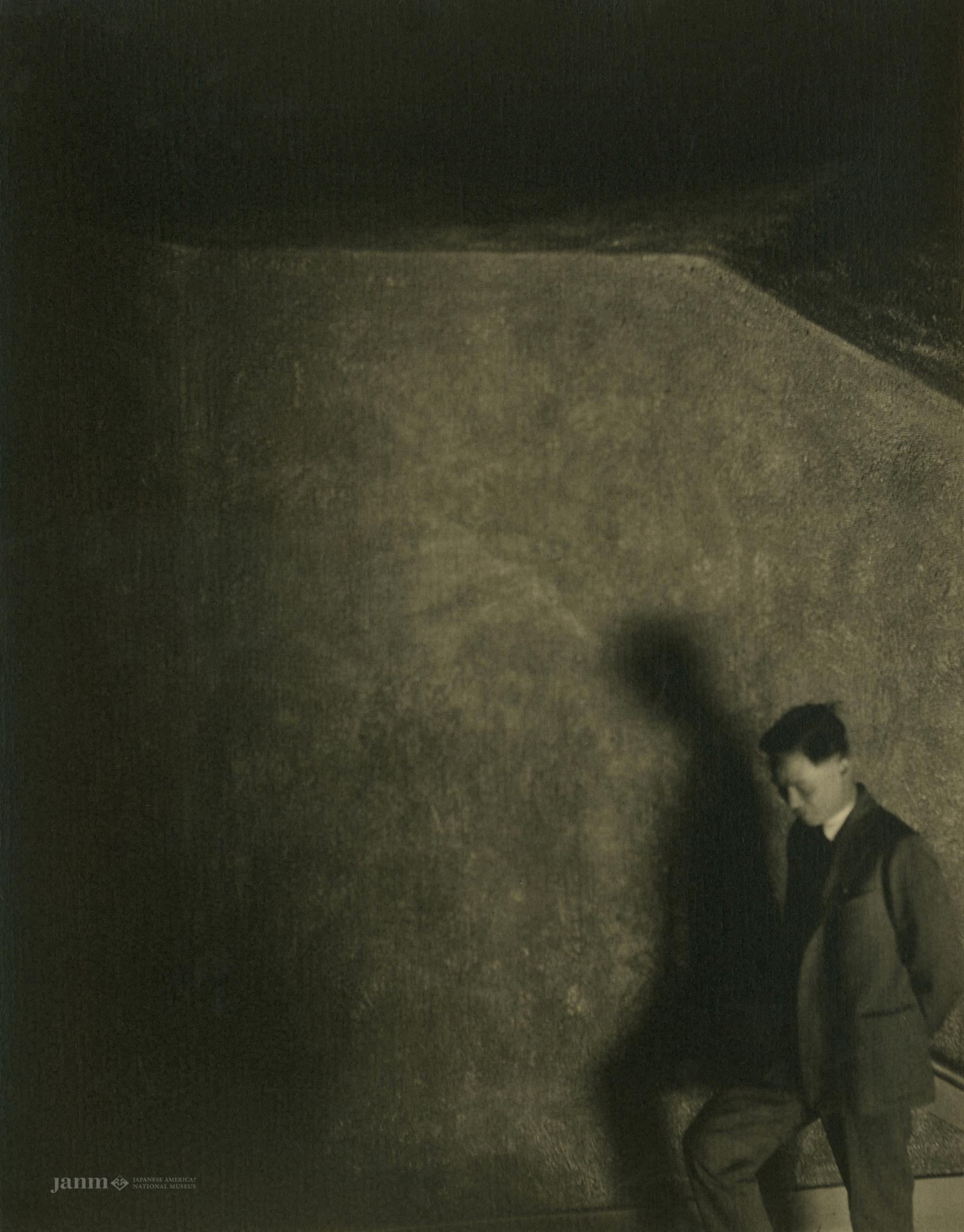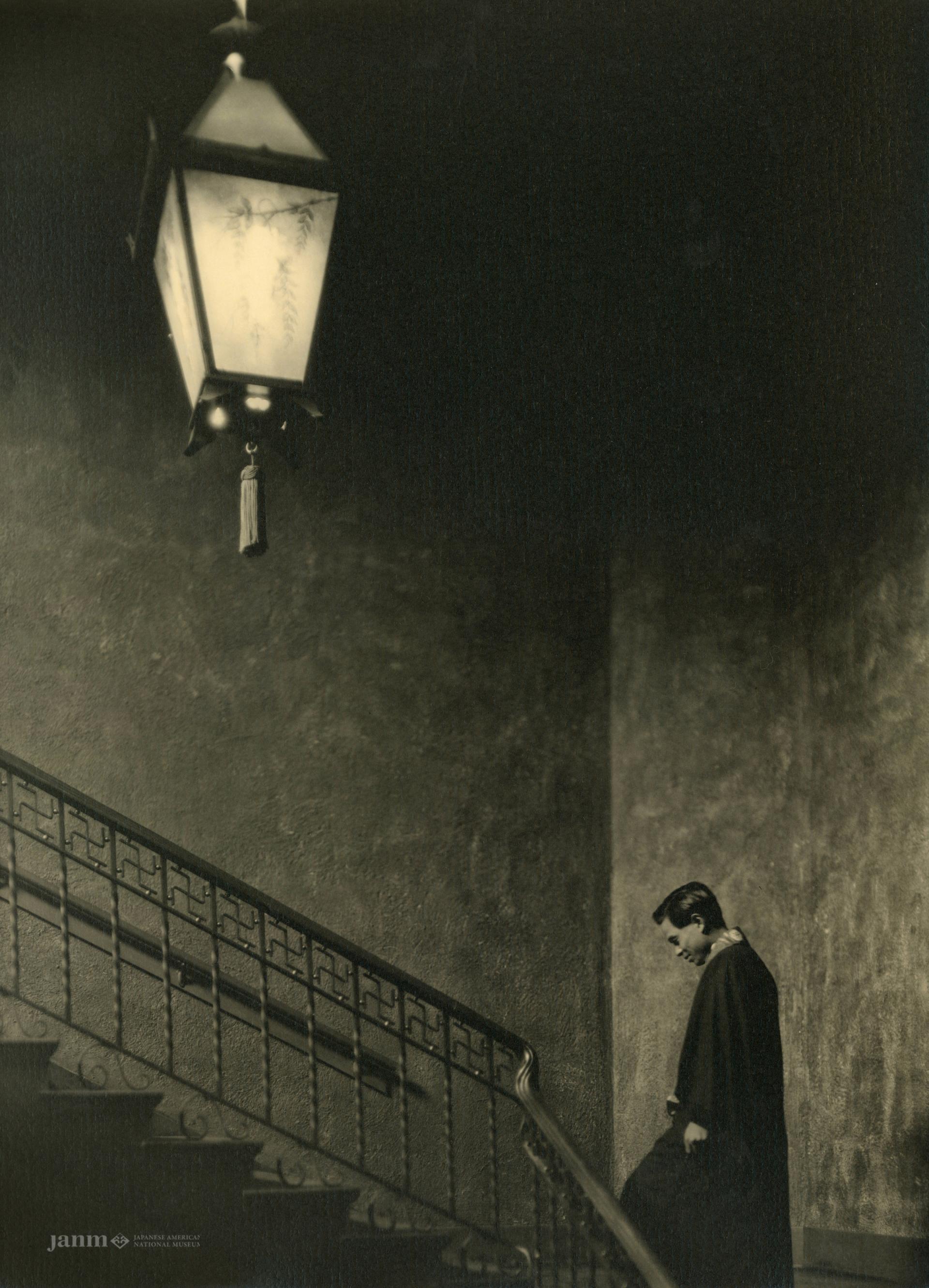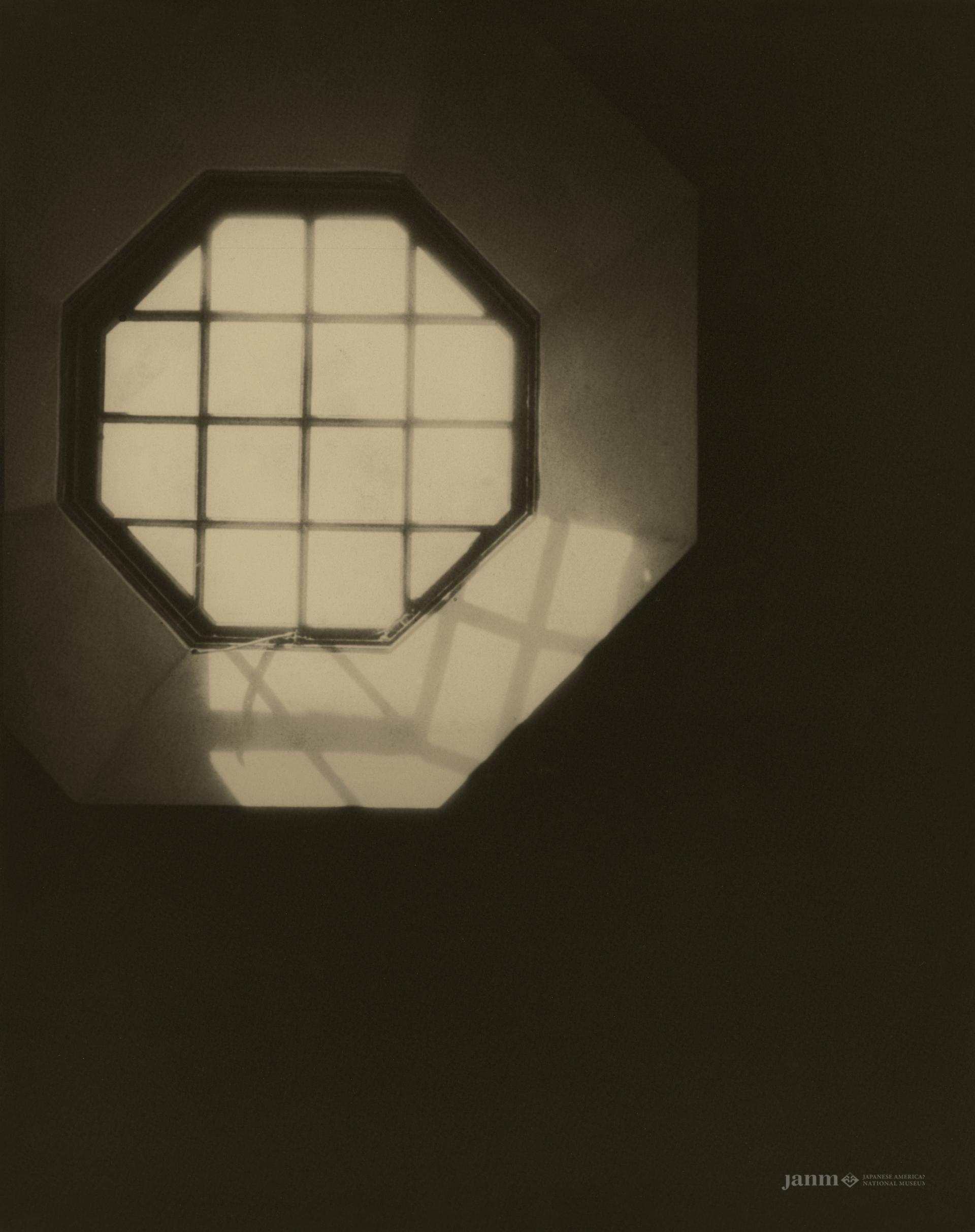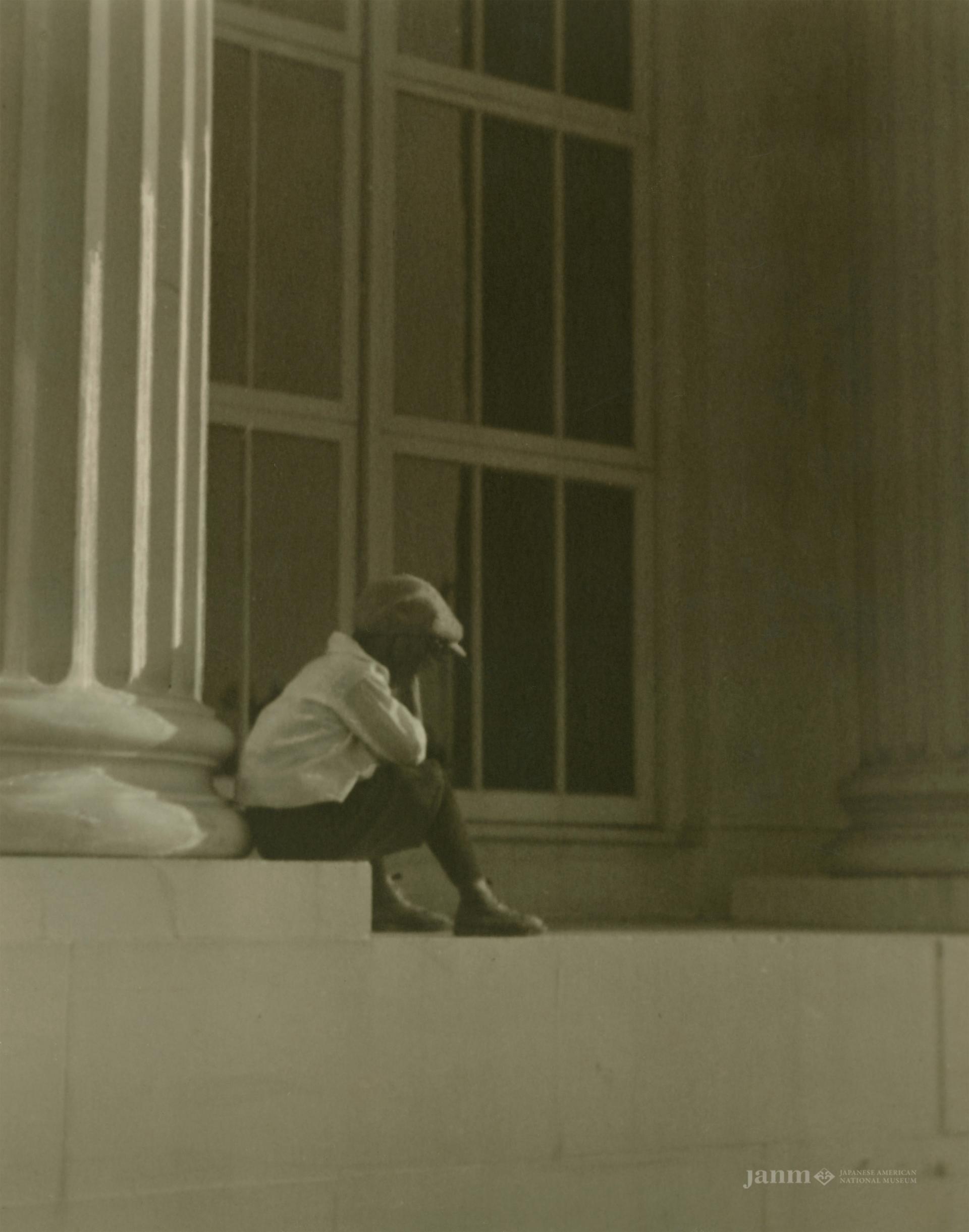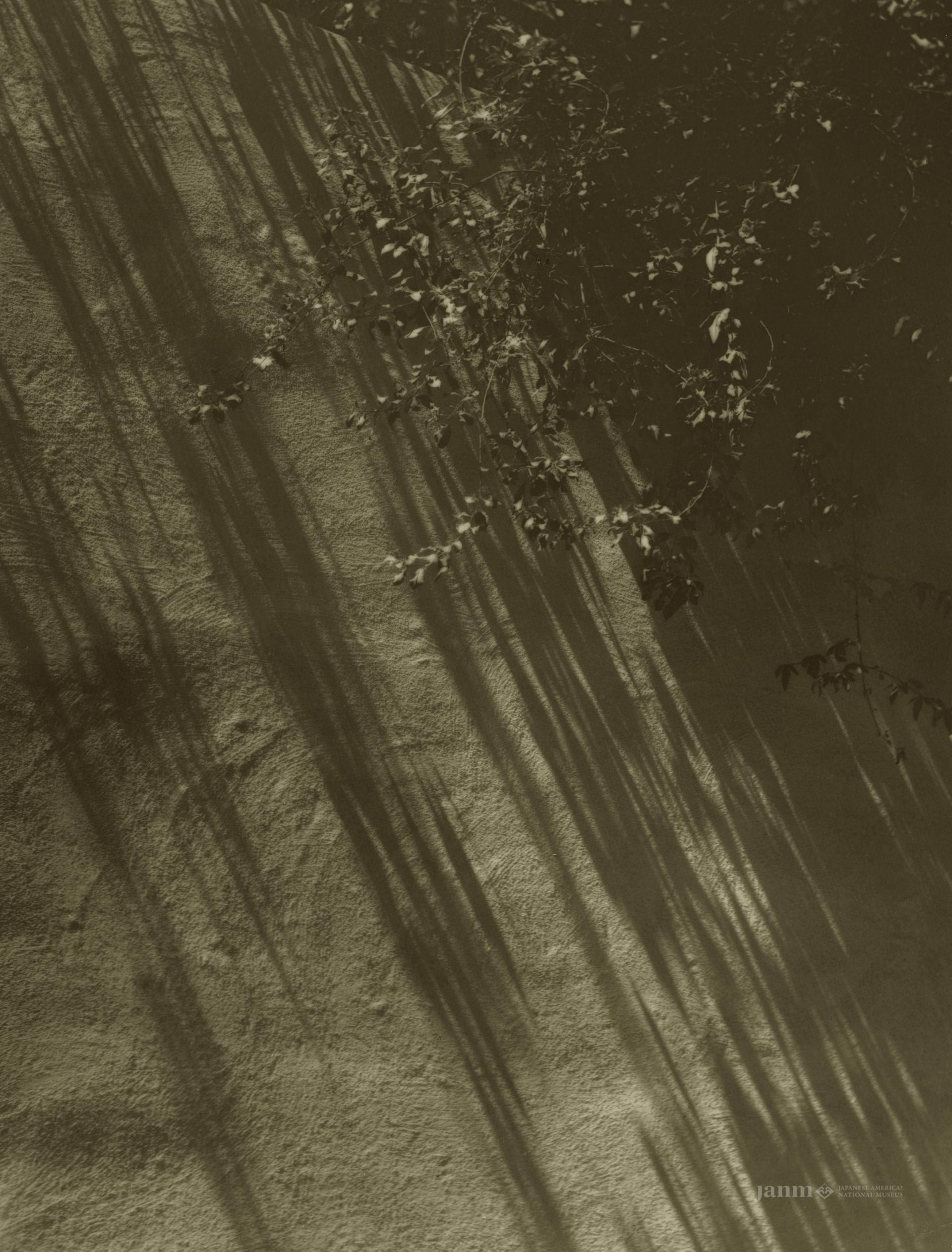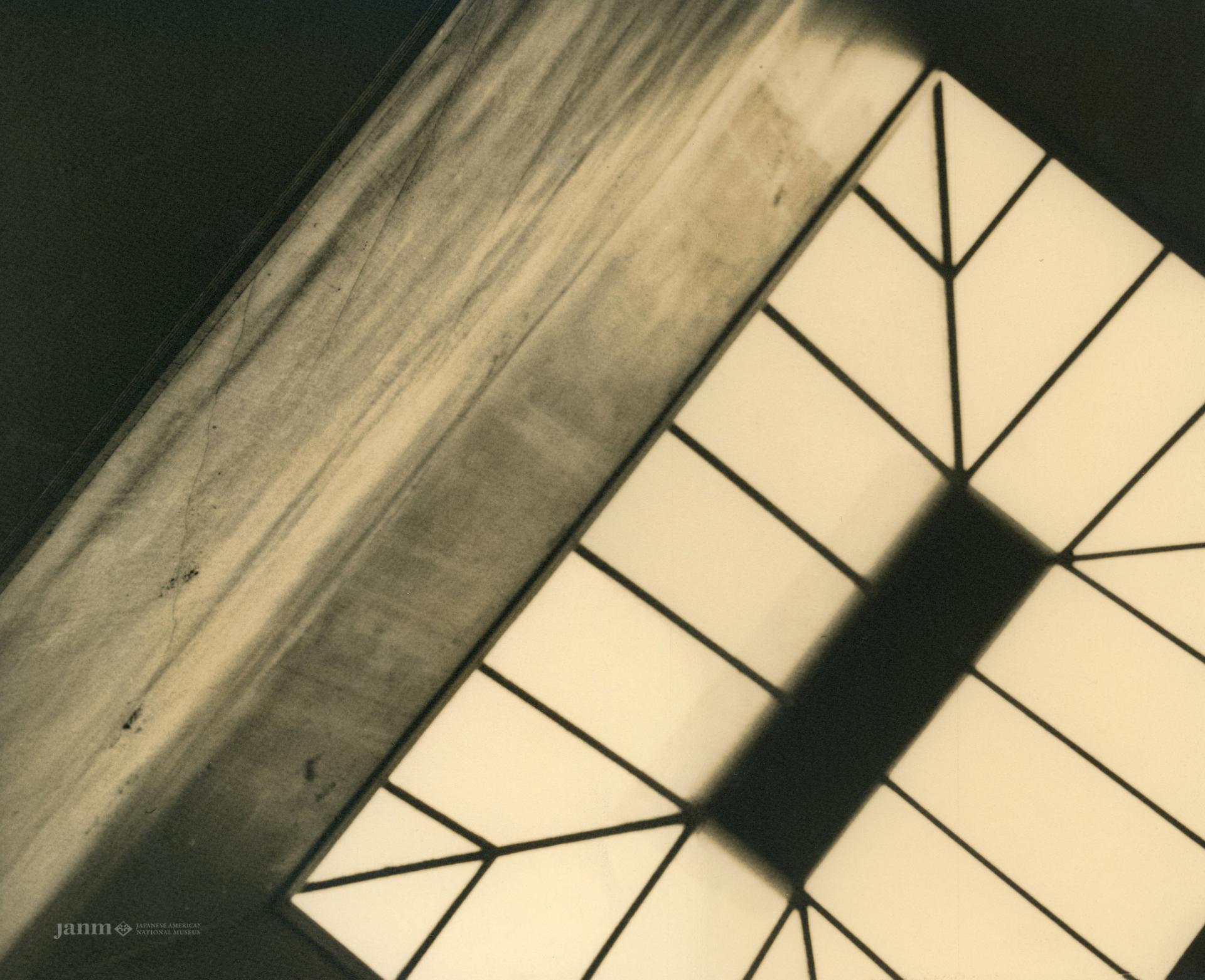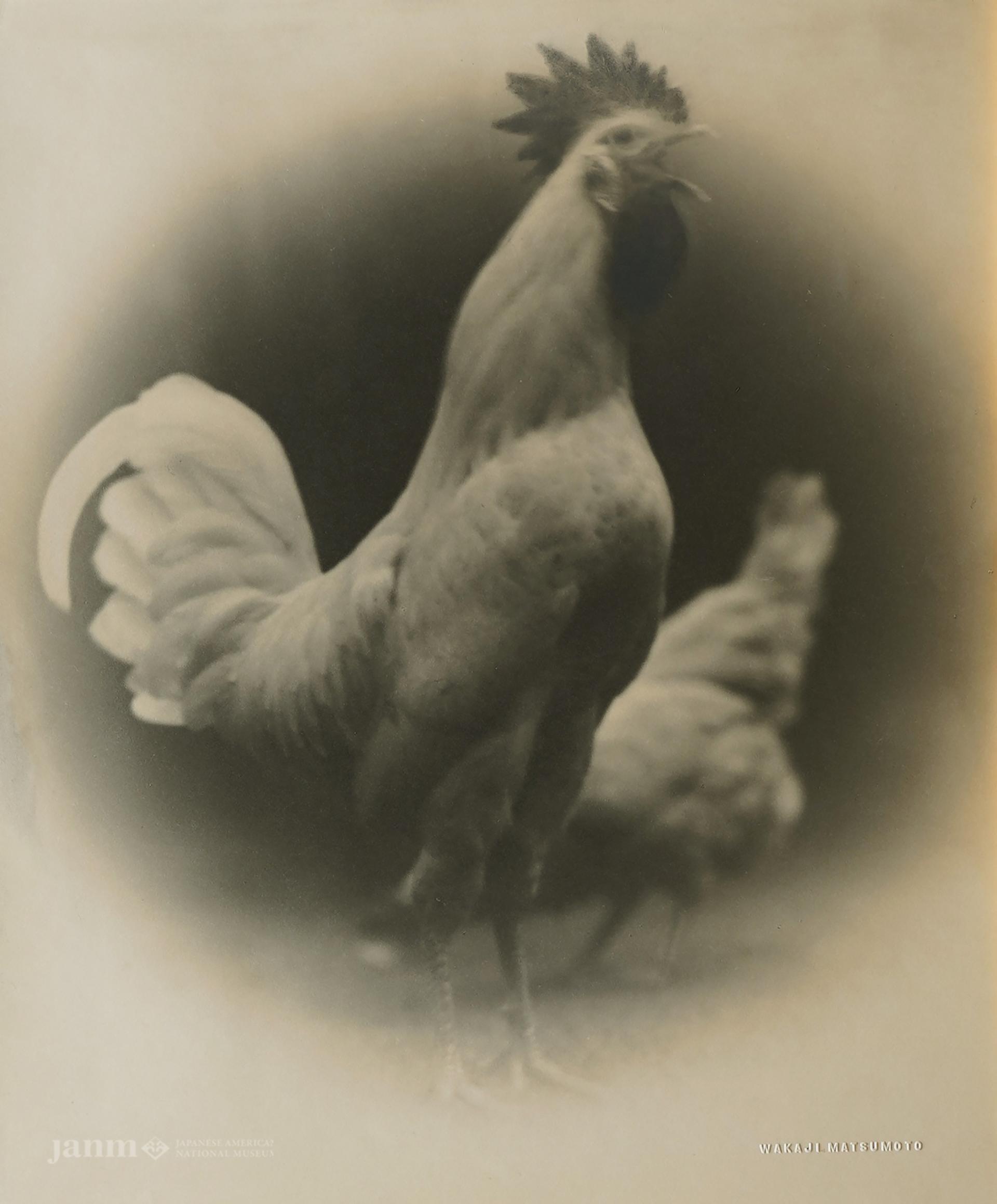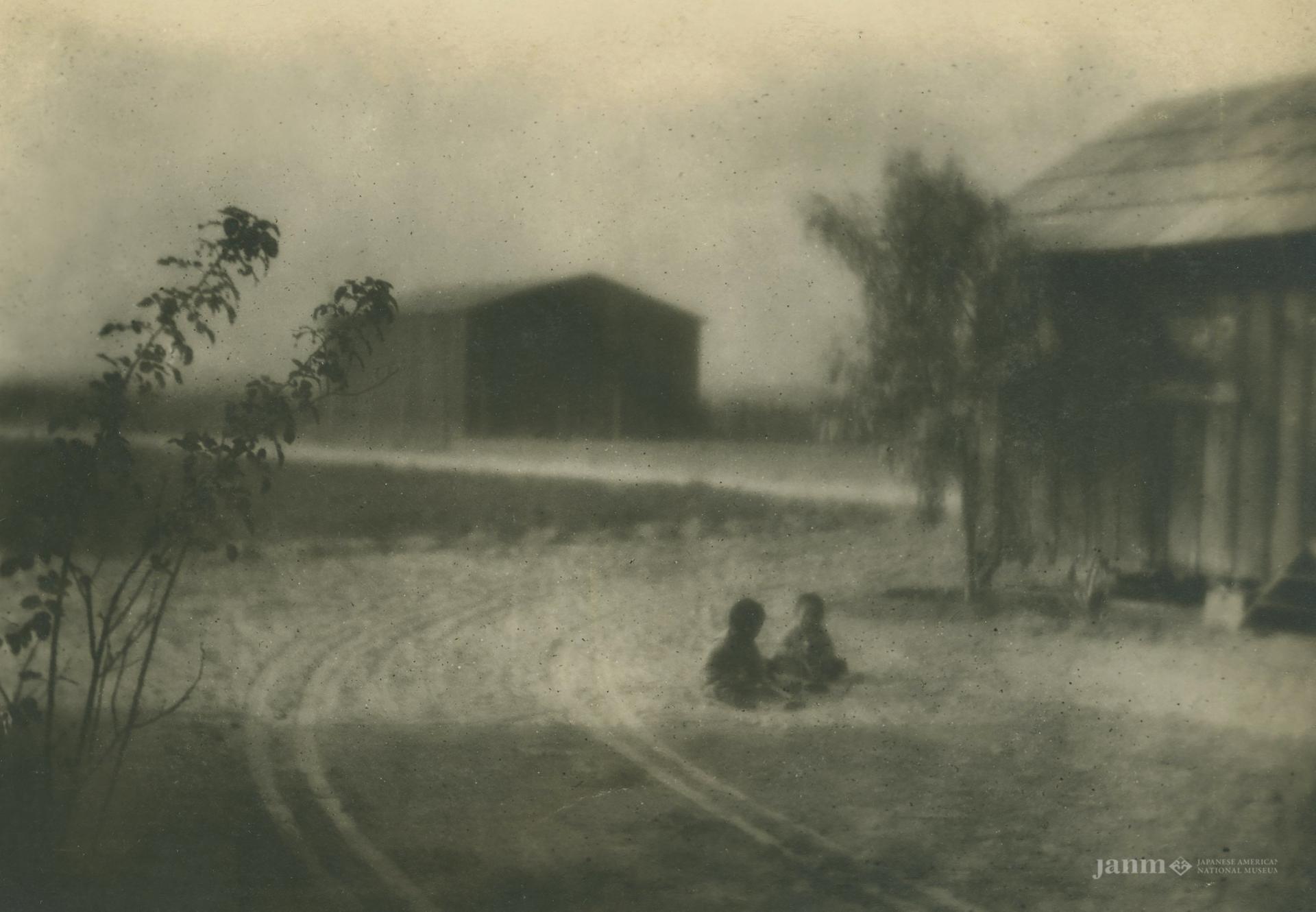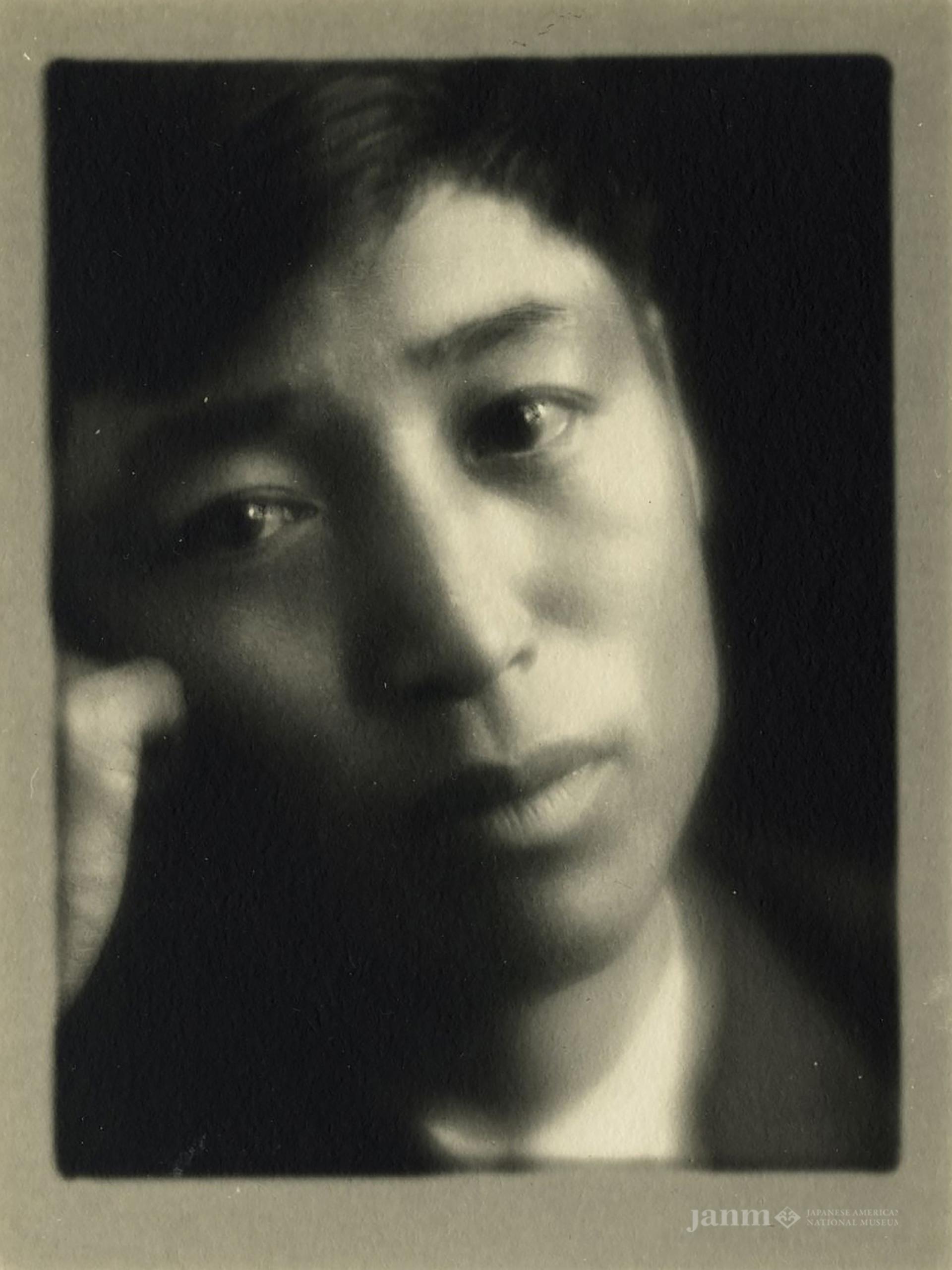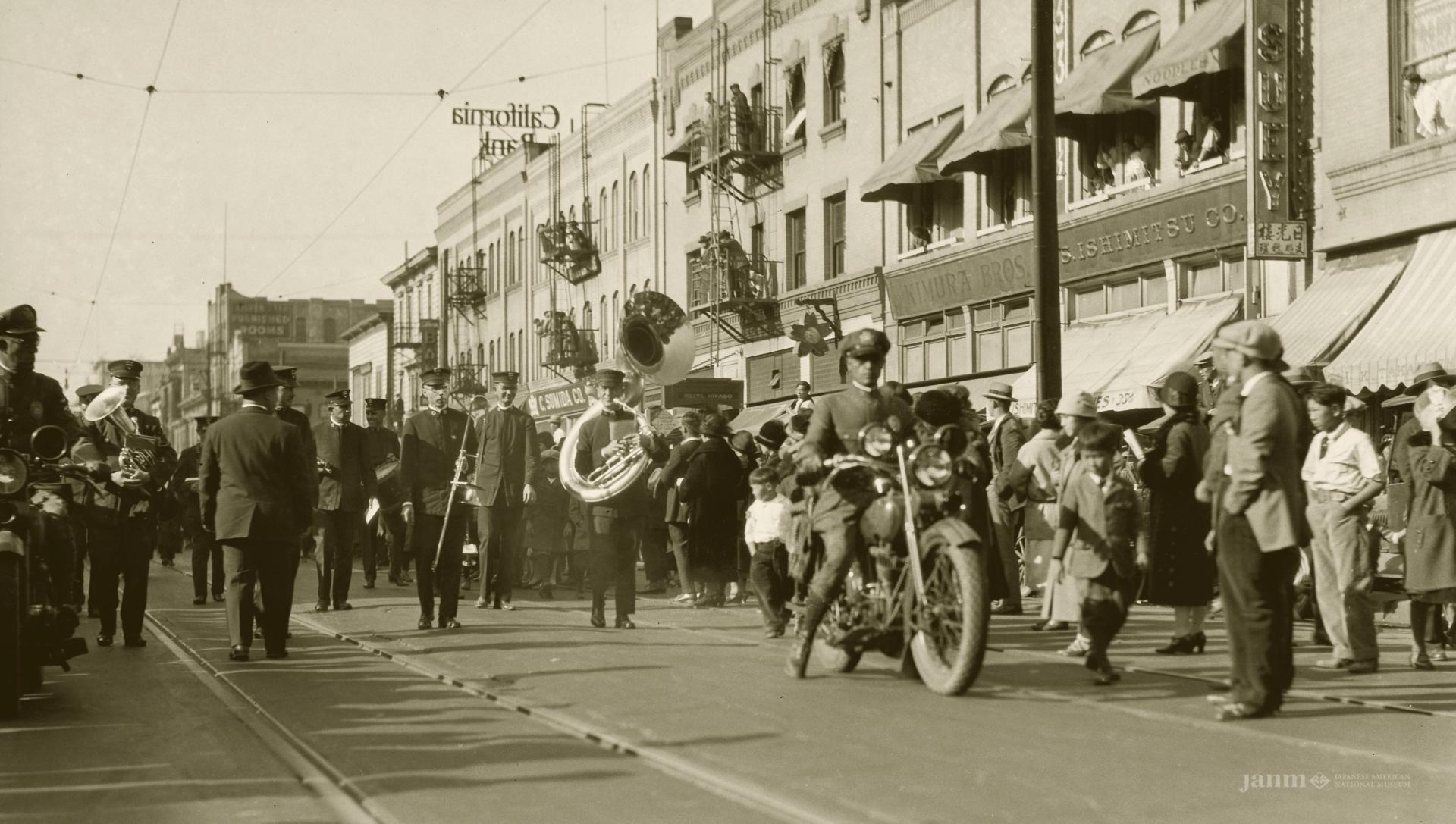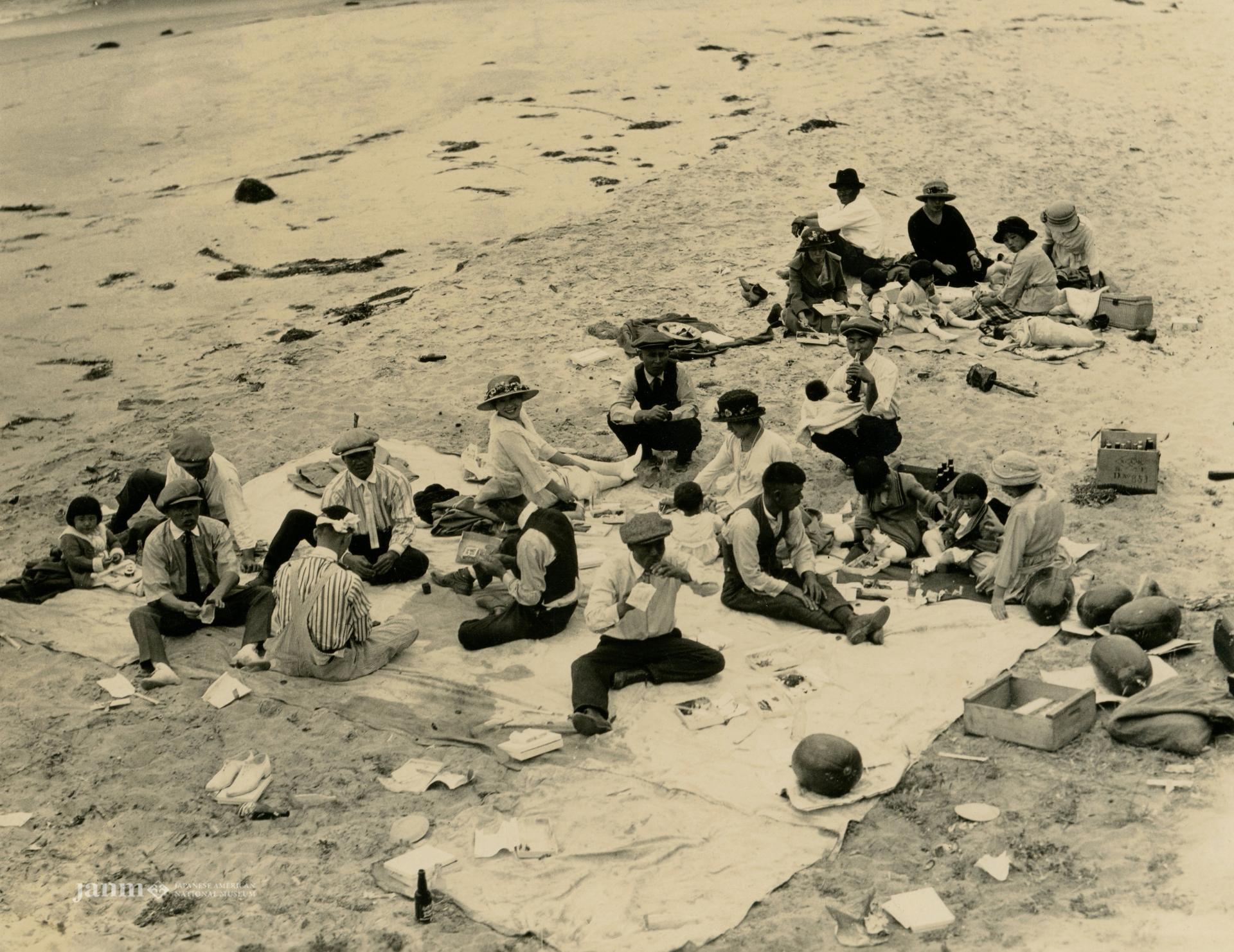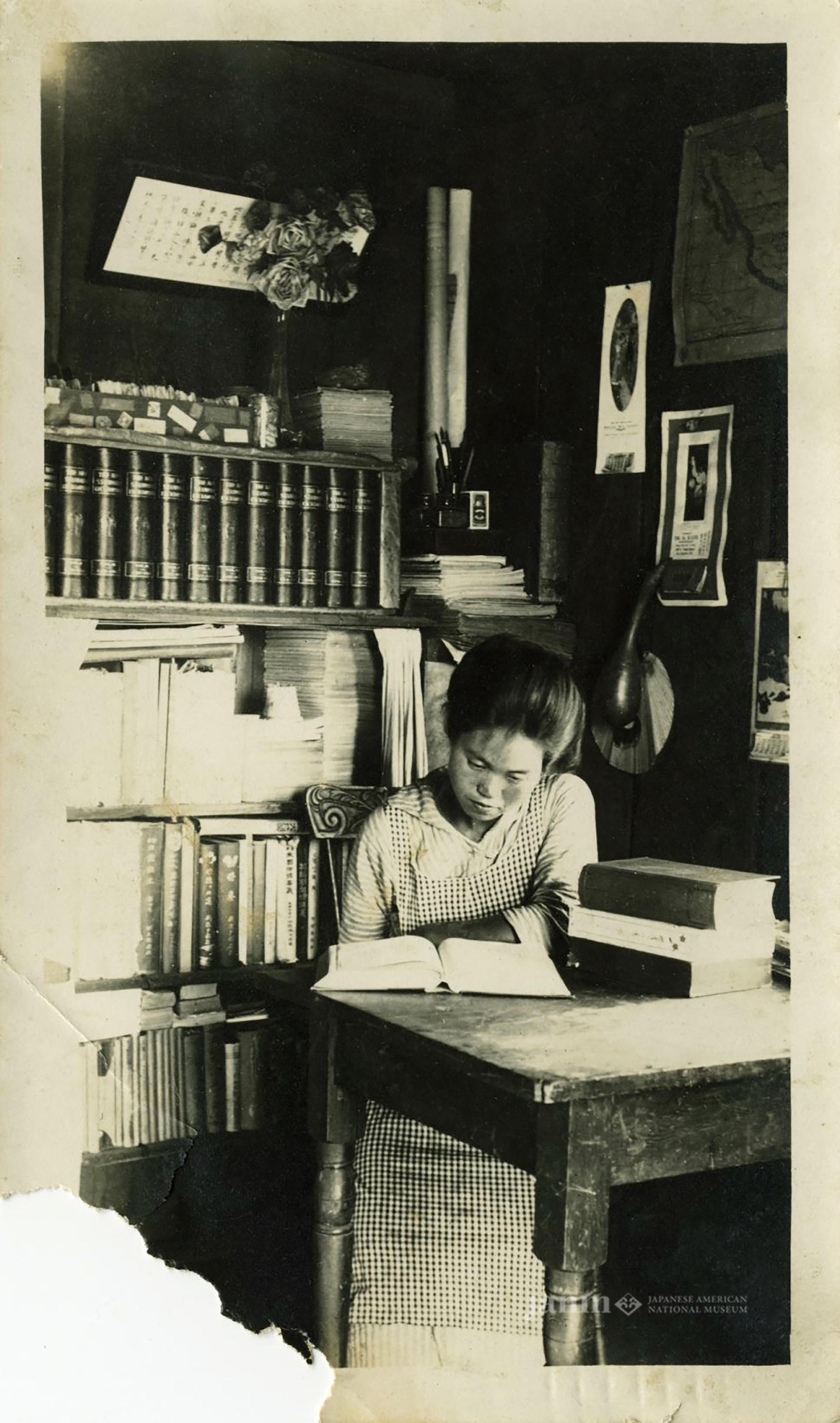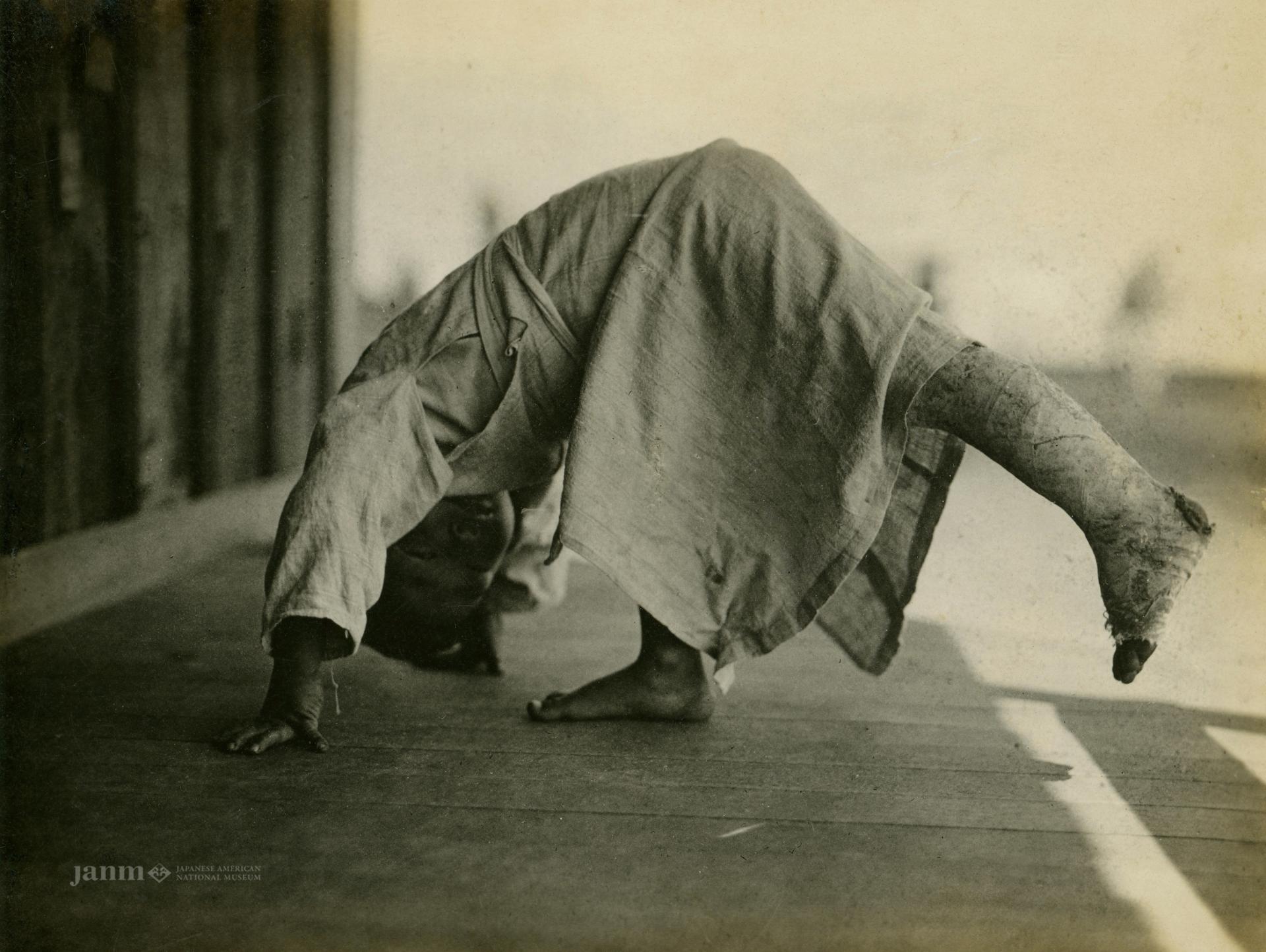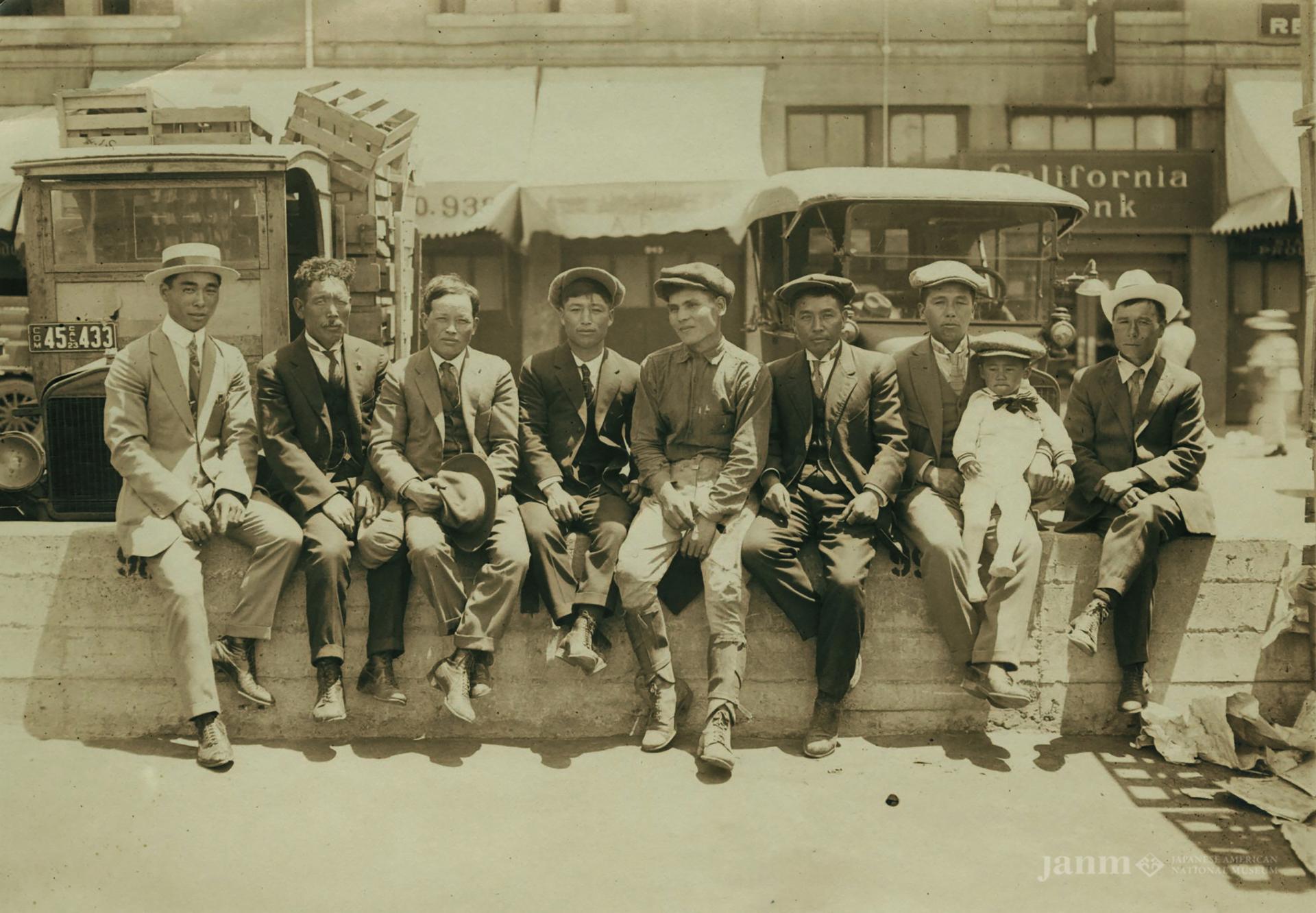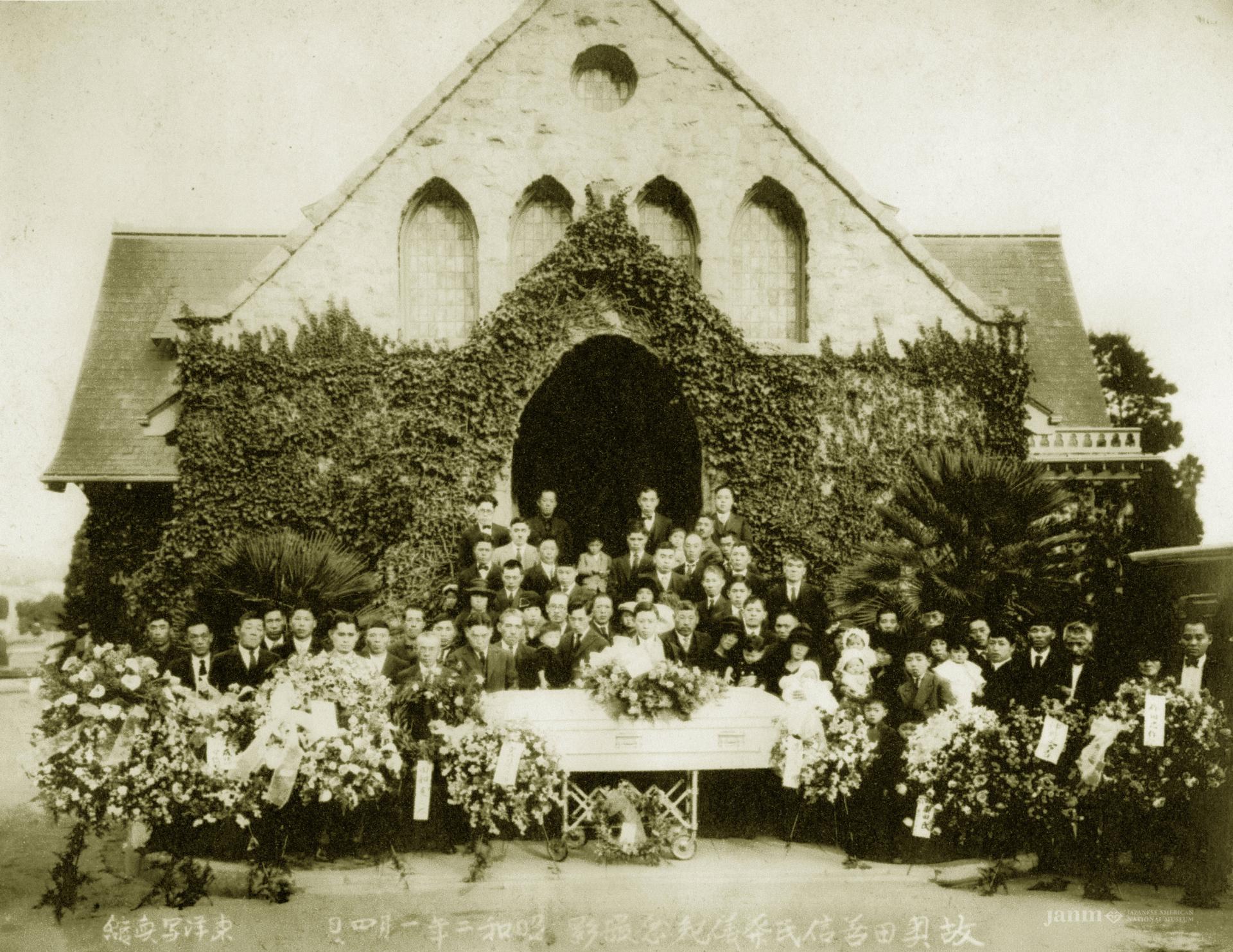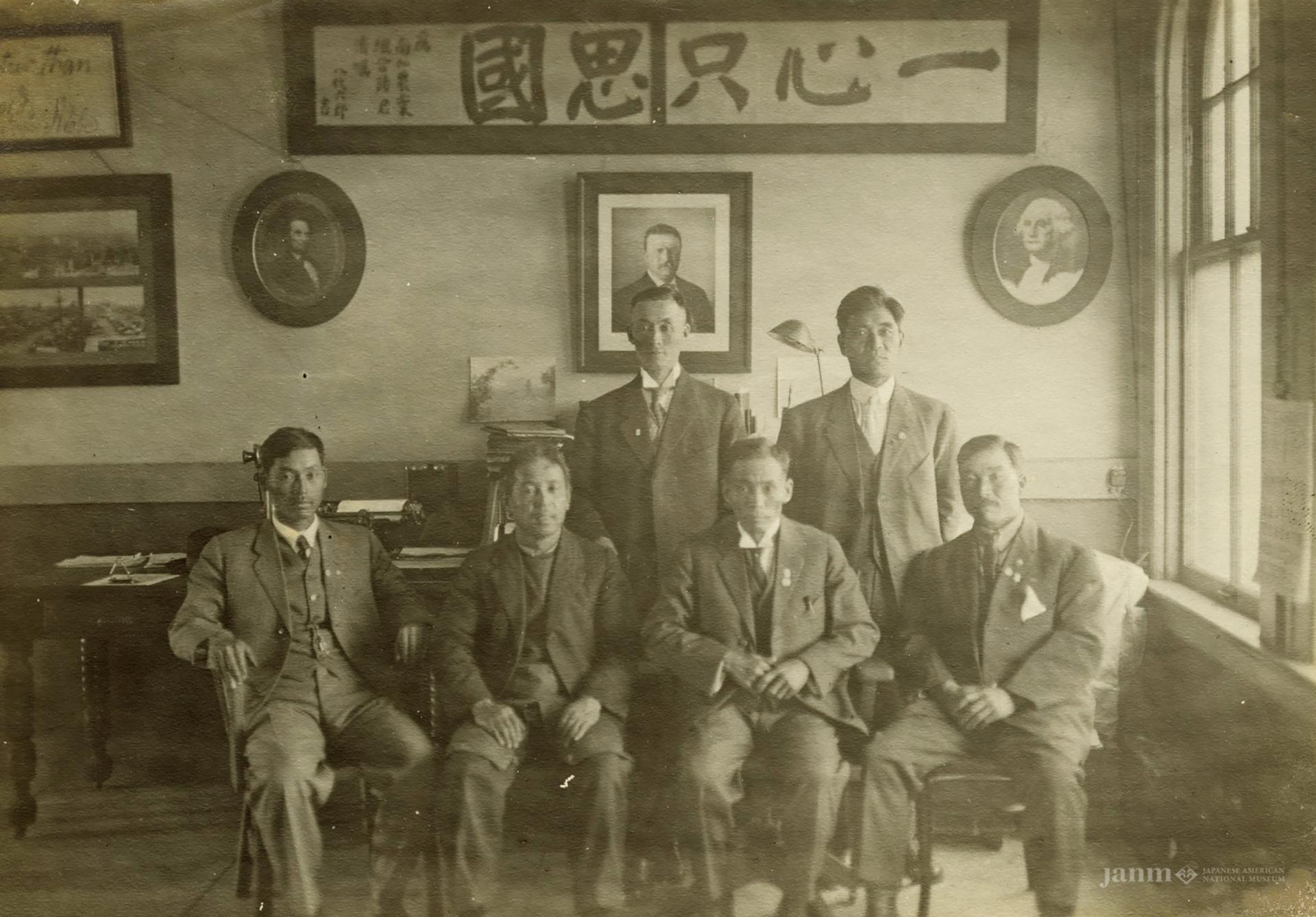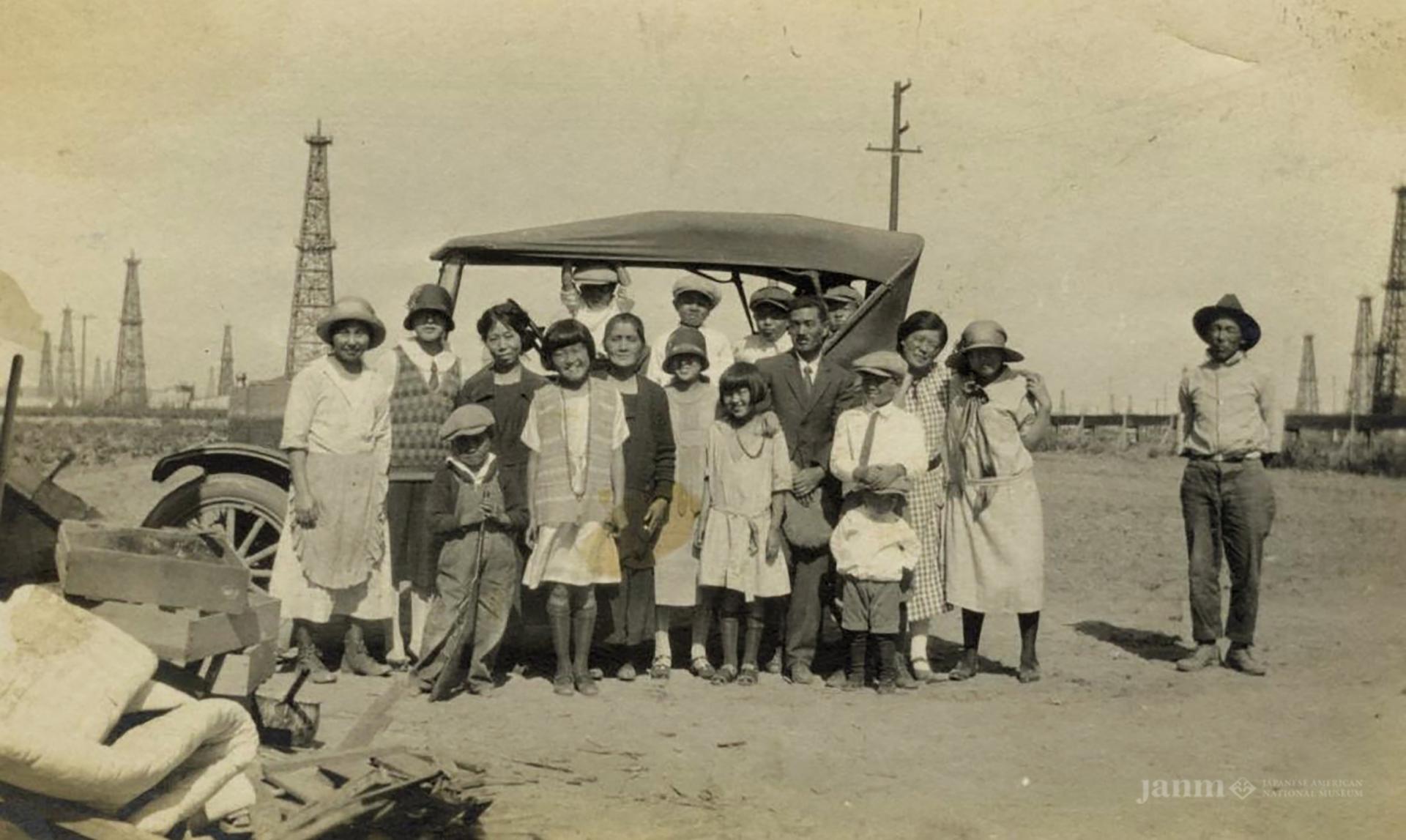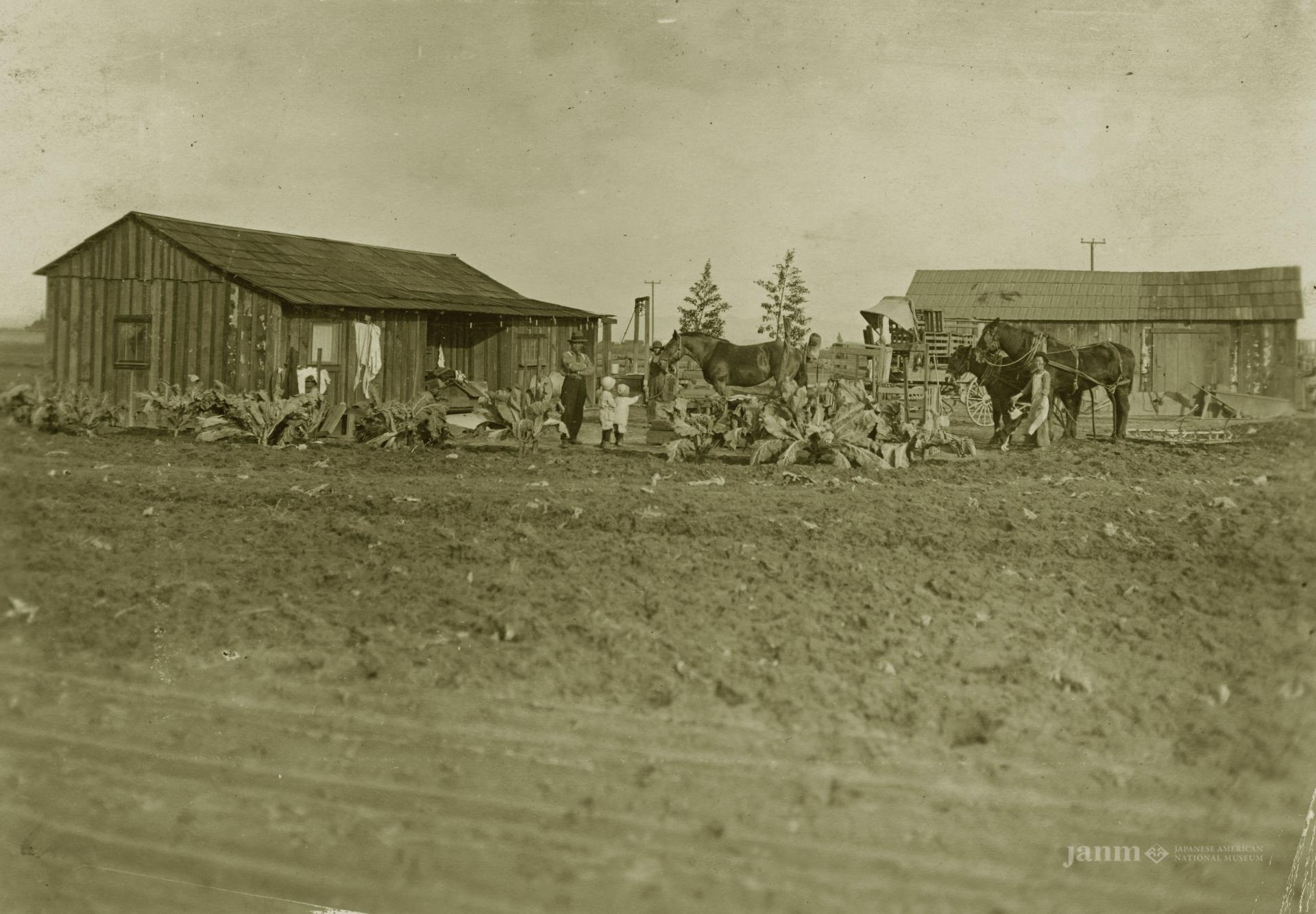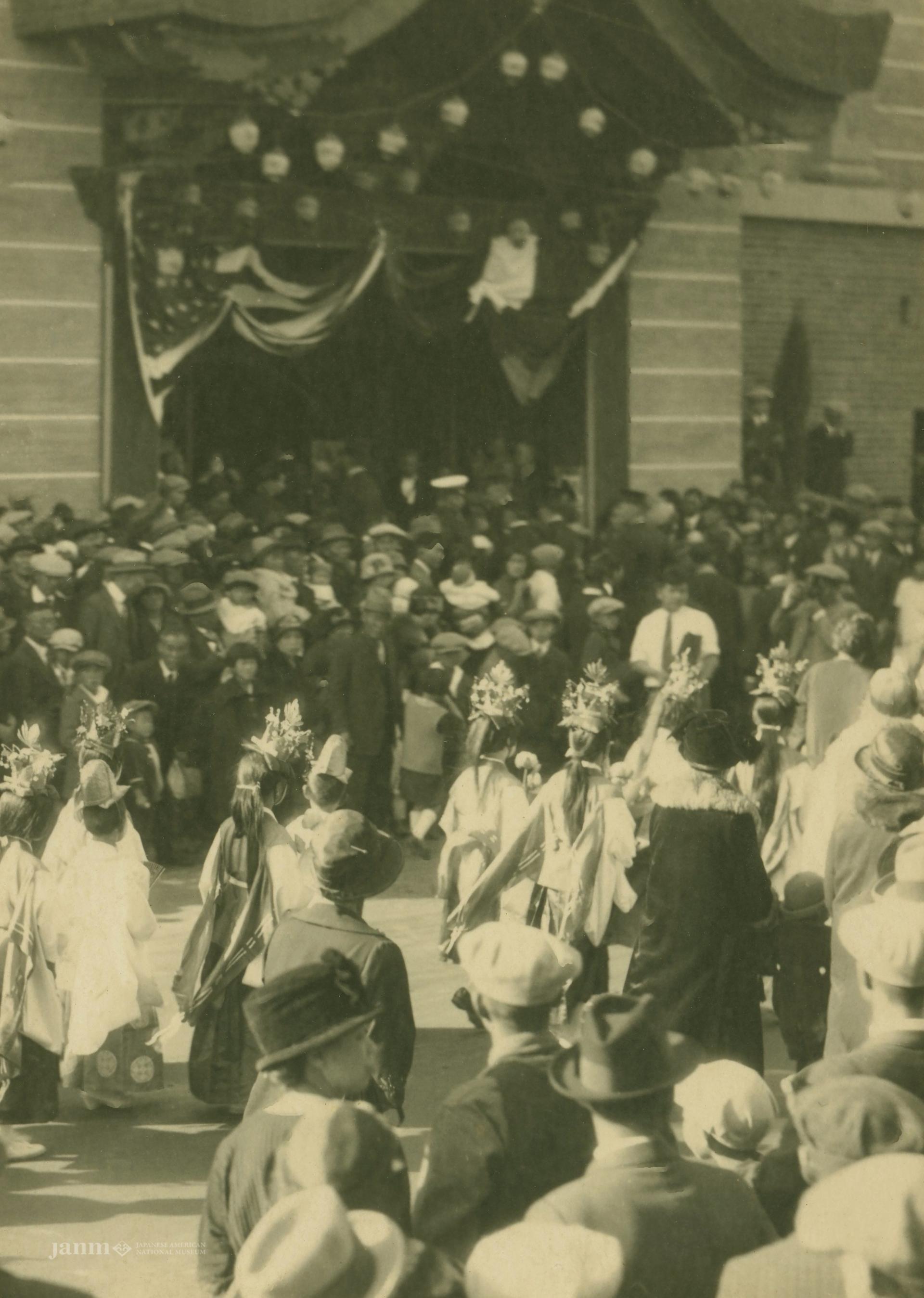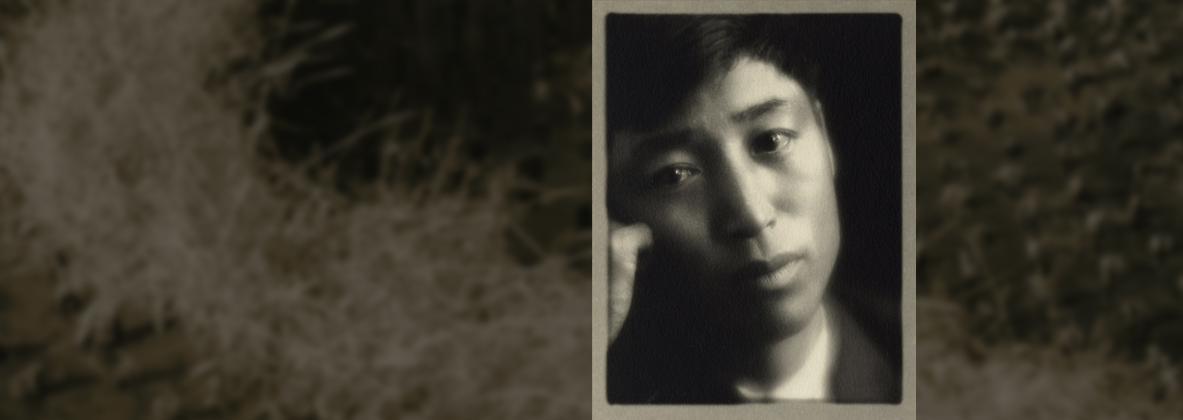
Online Exhibition
Wakaji Matsumoto
Los Angeles
By 1922, Wakaji was an active photographer in the Los Angeles photography community. By 1925 he was an assistant at Toyo Miyatake’s studio in Los Angeles’s Little Tokyo.
Toyo was the son of the first Japanese confectioner in Los Angeles. Like Wakaji, he yearned to be an artist and did not want to follow in his father’s footsteps. After Toyo took a course with local photographer H. K. Shigeta, he bought the Paris Photo Studio in 1923 and renamed it the Toyo Studio LA. It would eventually become the best-known studio in Little Tokyo.
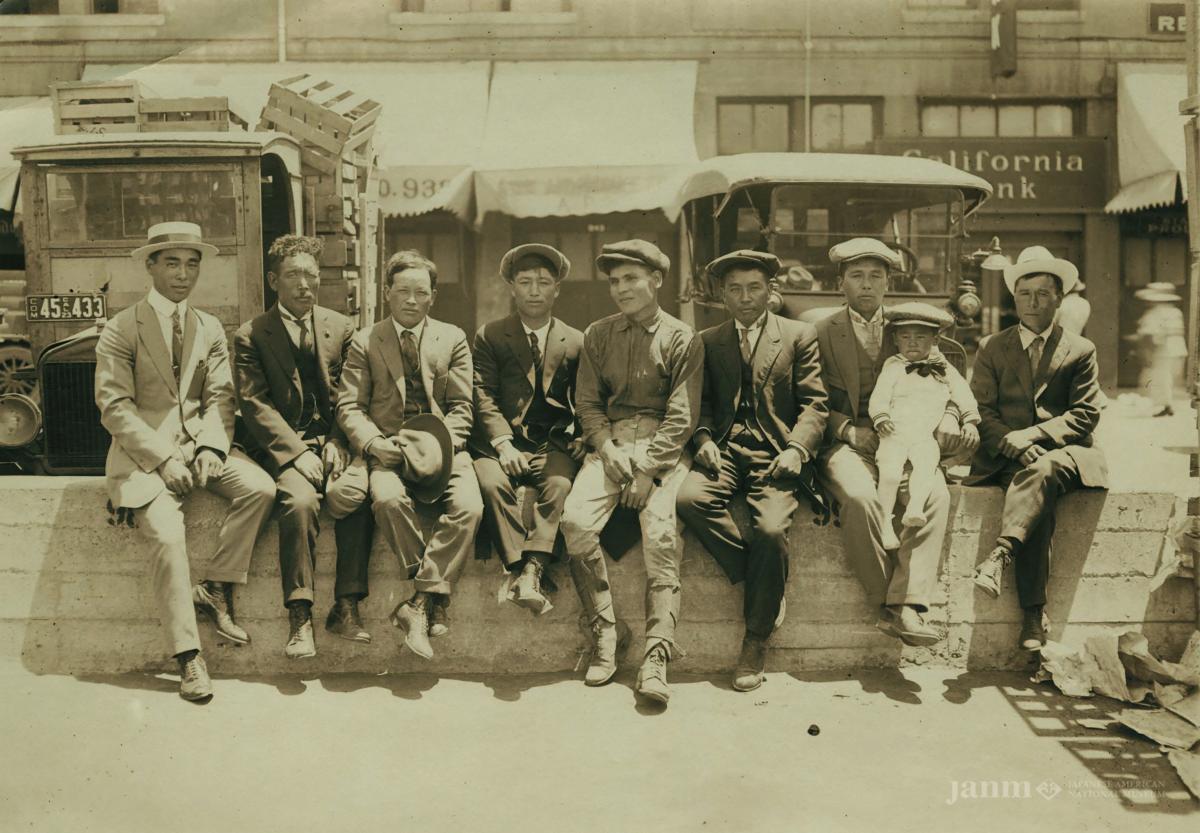
In 1926 and 1927, Wakaji produced extraordinary panoramas of Japanese American tenant farmers in the Los Angeles area. Families and their workers stood in the fields as if they were rooted in the ground like the produce they grew. These poignant photographs show the difficult challenges confronting Japanese Americans, as well as their resolve and resilience in facing those challenges. He also recorded activities from his own life, including his family farm, Little Tokyo, the produce market, and his children’s schools.
During the 1920s, Wakaji also created photographs as a form of personal expression. As a member of the Japanese Camera Pictorialists of California (JCPC) in Little Tokyo, he was at the center of an influential community recognized for its modernism. The club’s visual style was admired by members of the European avant-garde, such as Moholy-Nagy, whose compositions often used the same visual effects. While Little Tokyo seemed to be an isolated, almost insular ethnic enclave, such was not the case. JCPC photographers established extensive connections throughout the US, Europe, and Japan. Their work was exhibited in London, Paris, and Tokyo, and was reproduced in international publications.
Although Wakaji did not exhibit his work extensively, he presented six prints in the JCPC club’s first exhibition during 1926: California Field, Silent Under the Bridge, Road to Valley, Study, Parade, and In the Temple. None of these prints are known to exist today with the exception of In the Temple, which was taken inside the Hompa Hongwanji Buddhist temple when it was constructed in 1925. Although his output was small, his art photographs demonstrate his contributions to the vital photography community in Little Tokyo during the early 1920s.
JCPC members were also associated with Edward Weston and Margrethe Mather, both of whom were interested in Japanese art. Weston visited JCPC members’ studios and Mather juried the first exhibition of art photography in Little Tokyo that was sponsored by The Rafu Shimpo in 1924.
Watch the video to learn more about Wajaki’s art photography and explore his work in three photo galleries.
Los Angeles
Ongoing
Los Angeles
By 1922, Wakaji was an active photographer in the Los Angeles photography community. By 1925 he was an assistant at Toyo Miyatake’s studio in Los Angeles’s Little Tokyo.
Toyo was the son of the first Japanese confectioner in Los Angeles. Like Wakaji, he yearned to be an artist and did not want to follow in his father’s footsteps. After Toyo took a course with local photographer H. K. Shigeta, he bought the Paris Photo Studio in 1923 and renamed it the Toyo Studio LA. It would eventually become the best-known studio in Little Tokyo.

In 1926 and 1927, Wakaji produced extraordinary panoramas of Japanese American tenant farmers in the Los Angeles area. Families and their workers stood in the fields as if they were rooted in the ground like the produce they grew. These poignant photographs show the difficult challenges confronting Japanese Americans, as well as their resolve and resilience in facing those challenges. He also recorded activities from his own life, including his family farm, Little Tokyo, the produce market, and his children’s schools.
During the 1920s, Wakaji also created photographs as a form of personal expression. As a member of the Japanese Camera Pictorialists of California (JCPC) in Little Tokyo, he was at the center of an influential community recognized for its modernism. The club’s visual style was admired by members of the European avant-garde, such as Moholy-Nagy, whose compositions often used the same visual effects. While Little Tokyo seemed to be an isolated, almost insular ethnic enclave, such was not the case. JCPC photographers established extensive connections throughout the US, Europe, and Japan. Their work was exhibited in London, Paris, and Tokyo, and was reproduced in international publications.
Although Wakaji did not exhibit his work extensively, he presented six prints in the JCPC club’s first exhibition during 1926: California Field, Silent Under the Bridge, Road to Valley, Study, Parade, and In the Temple. None of these prints are known to exist today with the exception of In the Temple, which was taken inside the Hompa Hongwanji Buddhist temple when it was constructed in 1925. Although his output was small, his art photographs demonstrate his contributions to the vital photography community in Little Tokyo during the early 1920s.
JCPC members were also associated with Edward Weston and Margrethe Mather, both of whom were interested in Japanese art. Weston visited JCPC members’ studios and Mather juried the first exhibition of art photography in Little Tokyo that was sponsored by The Rafu Shimpo in 1924.
Watch the video to learn more about Wajaki’s art photography and explore his work in three photo galleries.
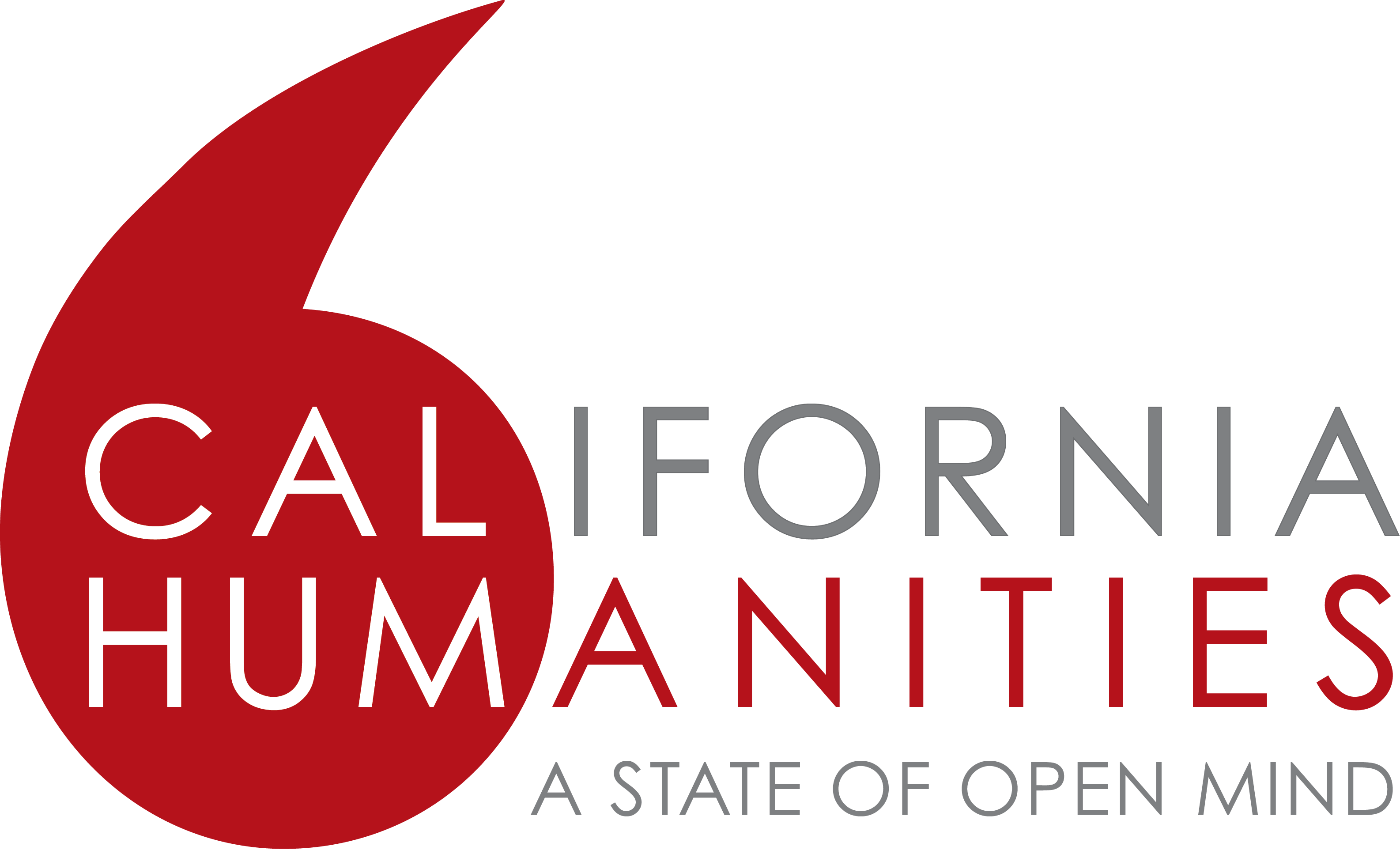
This project was made possible with support from California Humanities, a non-profit partner of the National Endowment for the Humanities. Visit calhum.org.
Media Sponsor: ![]()
To inquire about re-use of these photos, please contact collections@janm.org.
Los Angeles
Ongoing
Los Angeles
By 1922, Wakaji was an active photographer in the Los Angeles photography community. By 1925 he was an assistant at Toyo Miyatake’s studio in Los Angeles’s Little Tokyo.
Toyo was the son of the first Japanese confectioner in Los Angeles. Like Wakaji, he yearned to be an artist and did not want to follow in his father’s footsteps. After Toyo took a course with local photographer H. K. Shigeta, he bought the Paris Photo Studio in 1923 and renamed it the Toyo Studio LA. It would eventually become the best-known studio in Little Tokyo.

In 1926 and 1927, Wakaji produced extraordinary panoramas of Japanese American tenant farmers in the Los Angeles area. Families and their workers stood in the fields as if they were rooted in the ground like the produce they grew. These poignant photographs show the difficult challenges confronting Japanese Americans, as well as their resolve and resilience in facing those challenges. He also recorded activities from his own life, including his family farm, Little Tokyo, the produce market, and his children’s schools.
During the 1920s, Wakaji also created photographs as a form of personal expression. As a member of the Japanese Camera Pictorialists of California (JCPC) in Little Tokyo, he was at the center of an influential community recognized for its modernism. The club’s visual style was admired by members of the European avant-garde, such as Moholy-Nagy, whose compositions often used the same visual effects. While Little Tokyo seemed to be an isolated, almost insular ethnic enclave, such was not the case. JCPC photographers established extensive connections throughout the US, Europe, and Japan. Their work was exhibited in London, Paris, and Tokyo, and was reproduced in international publications.
Although Wakaji did not exhibit his work extensively, he presented six prints in the JCPC club’s first exhibition during 1926: California Field, Silent Under the Bridge, Road to Valley, Study, Parade, and In the Temple. None of these prints are known to exist today with the exception of In the Temple, which was taken inside the Hompa Hongwanji Buddhist temple when it was constructed in 1925. Although his output was small, his art photographs demonstrate his contributions to the vital photography community in Little Tokyo during the early 1920s.
JCPC members were also associated with Edward Weston and Margrethe Mather, both of whom were interested in Japanese art. Weston visited JCPC members’ studios and Mather juried the first exhibition of art photography in Little Tokyo that was sponsored by The Rafu Shimpo in 1924.
Watch the video to learn more about Wajaki’s art photography and explore his work in three photo galleries.

This project was made possible with support from California Humanities, a non-profit partner of the National Endowment for the Humanities. Visit calhum.org.
Media Sponsor: ![]()
To inquire about re-use of these photos, please contact collections@janm.org.
Wakaji Matsumoto—Episode 2: Little Tokyo
ART
Discover the art of daily life through photographs that Wakaji created as a form of personal expression.
Click “Gallery View” to view the photographs and captions in full frame. Click on the magnifying glass to use our extended zoom feature.
Man Climbing Stairs
Inside the Nishi Hongwanji Buddhist Temple at First Street and Central Avenue
Priest on Staircase with Hanging Lamp
The Nishi (Hompa) Hongwanji Buddhist Temple at First Street and Central Avenue
FARMING AND COMMUNITY
Experience the vibrancy of the Los Angeles Japanese American community through Wakaji’s lens.
Click “Gallery View” to view the photographs and captions in full frame. Click on the magnifying glass to use our extended zoom feature.
Little Tokyo Parade
Salvation Army band playing in a parade in Little Tokyo along East First Street, ca. 1925
Tei Matsumoto at Los Angeles Farm
Tei loved reading novels, unlike Wakaji, who read newspapers and educational books.
Roy Matsumoto with Broken Leg
Roy (Hiroshi), Wakaji’s oldest son, in a cast after being kicked by the farm’s draft horse, Joe, 1918
Wakaji and Friends
Wakaji and friends sitting in front of California Bank on South San Pedro Street
Japanese Funeral at Evergreen Cemetery
Funeral of Japanese community member at Evergreen Cemetery in Boyle Heights, ca. 1927
Japanese Businessmen
Japanese businessmen, most likely union members of the Southern California Agricultural Association in Little Tokyo. The framed scroll on the wall is a gift from Rokuro Yashiro, former Minister of the Japanese Navy which could be read "National Thought, One Heart." Portraits of US presidents are also on the wall, 1925.
Visiting Zaimoku Farm
Wakaji’s children (Hiroshi and Takeshi) visiting Zaimoku Farm, 1918
Parade Passing Nishi Hongwanji Temple, Little Tokyo
Japanese children wearing Shinto regalia in parade at Nishi Hongwanji Temple, which was built in 1925 and is now known as JANM’s Historic Building
PANORAMIC PHOTOS
Witness the challenges, energy, and serenity of the Japanese American farming community in Los Angeles through Wakai’s panoramic photography.
Click “Gallery View” to view the photographs and captions in full frame. Click on the magnifying glass to use our extended zoom feature.
Los Angeles City Market
City Market of Los Angeles on 9th Street and San Pedro, established by Mr. Louis Quan, ca. 1925
Nakatani Farm
Takuichi Nakatani farm with children playing baseball in the background, July 4, 1927
Bandini School, June 1927
Names of all students and faculty are written on the photo. Commerce, CA.
Matsumoto Farm with Neighbors and Wakaji’s children, 1926
Wakaji’s children (Tsutomu, Noboru, Harue, Isao, and Shizue) and neighborhood children with parents, ca. 1926

